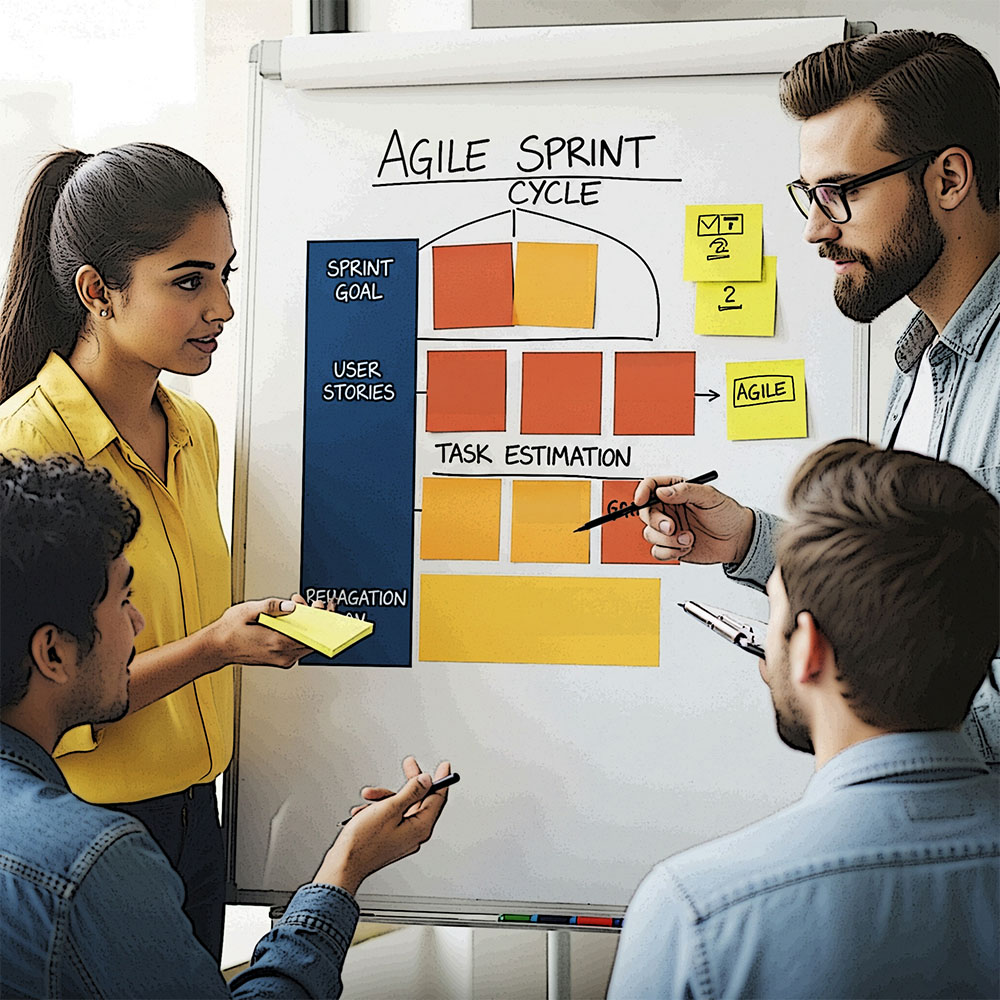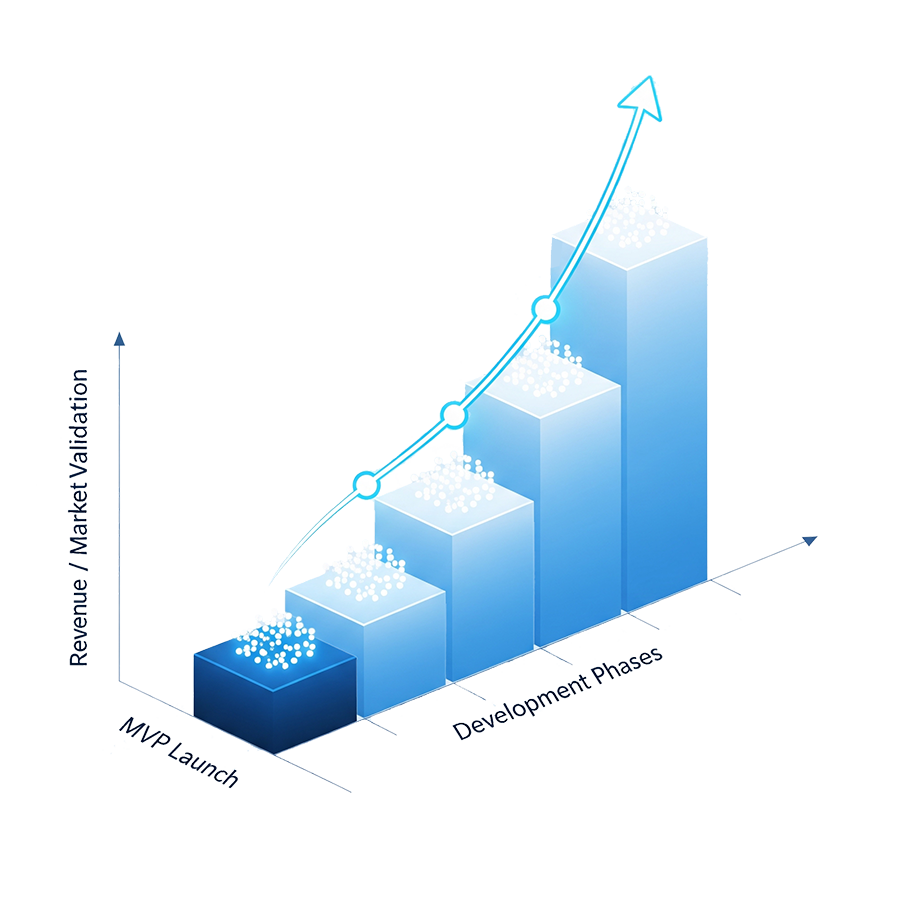Agile & Iterative Development
Building great products is a journey, not a destination.
We use a flexible, Agile development process that allows us to adapt to change, deliver value quickly, and build better software through continuous feedback and collaboration.

The Challenge: Building the Right Product in a Changing World
For a startup, the biggest risk is spending months (or years) building a product based on a fixed plan, only to discover that market needs have changed or the initial assumptions were wrong. The traditional "waterfall" approach to development is rigid and slow. An Agile, iterative process is the modern solution to this problem, designed for learning and adaptation.
How Our Agile Process Works
Our process is designed to keep you involved at every stage, ensuring we are always aligned and building what matters most.
1. Collaborative Backlog Creation
We work with you to create a "product backlog" - a prioritised list of the features and functionality you need in your product.
2. Development Sprints
We break the work into short cycles called "sprints" (typically 2 weeks). In each sprint, we take the top items from the backlog and build them.
3. Regular Demos & Feedback
At the end of every sprint, we demonstrate the new, working software to you. This gives you full visibility and the chance to provide immediate feedback.
4. Iterate & Adapt
Based on your feedback and changing priorities, we adapt the backlog for the next sprint. This iterative cycle ensures we are always building the most valuable features first.
Why Traditional Development Fails Startups
The traditional waterfall approach to software development was designed for projects with fixed requirements and predictable outcomes. Startups operate in uncertainty, making agile methodologies essential for success.
Rigid Planning Doesn't Work
Creating detailed specifications upfront assumes you know exactly what users want. In reality, you learn what works through building and testing.
Late Discovery of Problems
Waiting months to see working software means critical issues are discovered too late, when they're expensive and time-consuming to fix.
No Room for Market Feedback
Fixed contracts and specifications leave no room to incorporate user feedback or pivot based on market response.
Wasted Resources on Wrong Features
Building everything planned upfront often results in features users don't need while missing critical functionality they actually want.

The Benefits for Your Startup
-
Flexibility to Adapt
Market conditions and user feedback can change. Agile allows you to pivot and reprioritise features without derailing the entire project.
-
Complete Transparency
With regular demos and constant communication, you have full visibility into the project's progress at all times. No surprises.
-
Faster Time to Value
By delivering working software in small increments, you get value much sooner. This is essential for MVPs and early-stage products.
-
Higher Quality Product
Continuous feedback loops and regular testing throughout the process lead to a more robust, user-friendly, and successful final product.
Frequently Asked Questions
A sprint is a fixed time period where we build specific features from your prioritised backlog. Our sprints typically last 2 weeks, which provides the right balance between delivering meaningful progress and maintaining flexibility. At the end of each sprint, you'll see working software demonstrating the completed features.
Your involvement is crucial but manageable. We'll need you for sprint planning sessions (1-2 hours every 2 weeks) and sprint reviews to see demos and provide feedback (1 hour every 2 weeks). Between sprints, we may have quick questions via Slack or email. The more engaged you are, the better the final product will be.
Absolutely! That's the core advantage of agile development. You can reprioritise features, add new requirements, or pivot based on user feedback at any sprint boundary. While changes within an active sprint are discouraged to maintain focus, the backlog can be adjusted continuously to reflect your evolving needs and market insights.
Quality is built into every sprint. We include testing as part of our definition of "done" for each feature. Critical bugs are fixed immediately, while minor issues are added to the backlog and prioritised alongside new features. This continuous testing approach results in more stable software compared to testing everything at the end.
We provide estimates based on the initial backlog and our team's velocity (how much we can deliver per sprint). For MVPs, we typically work backward from your target launch date to determine what features can be included. As we complete sprints, our estimates become more accurate, giving you better visibility into timelines.
The agile process continues! After launch, we help you gather user feedback and analytics to inform the next iterations. Our post-launch support includes ongoing sprints to add features, fix issues, and scale your product based on real user data. The iterative nature of agile is perfect for continuous improvement.
Ready to Build a Better Product, Faster?
Let's discuss how our agile partnership approach can reduce your risk and accelerate your journey from idea to market.